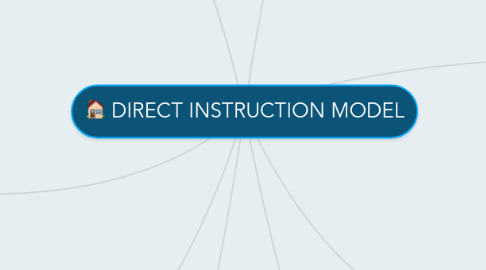
1. Introducing new Topics
1.1. vocabulary, skills, processes, techniques
1.2. generate interest in topic, learning goals
1.3. reinforce knowledge and skills
1.3.1. reteach
1.3.2. review
2. Differentiating Instruction
2.1. creating differentiated experiences or access to the content
2.1.1. students could watch a video after a live presentation if they need more support
2.1.2. flipped instruction?
2.1.3. animated or simulated instruction
2.2. Process
2.2.1. student groupings
2.2.2. choice of practice examples
2.2.3. partner work; peer to peer support
2.2.4. varied graphic organizers
2.3. Product
2.3.1. varied ways of demonstrating mastery
3. Planning for Teaching
3.1. make sure what students are learning (factual, conceptual, procedural) has clearly defined steps or attributes
3.2. have clear goals and expectations
3.2.1. using EQs can help
3.2.2. make sure students know clear objectives
3.3. review knowledge and skills in advance
3.3.1. teacher can find potential areas of concern
3.3.2. teacher can pick the best problems for students to work through in gaining the skill
3.4. select best examples
4. When to Use
4.1. Procedural Knowledge
4.1.1. Concepts (mental constructs)
4.1.1.1. concrete, simple, visible attributes
4.1.1.2. widely recognized / critical attributes
5. Benefits
5.1. critical development of thinking skills
5.2. create confident independent workers
5.3. strengthens autonomous learning
5.4. gain understanding of self
6. Philosophical Principles
6.1. All children can be taught
6.2. All teachers can succeed if provided with adequate training and materials
6.3. All details of instruction must be controlled to minimize the chance of students' misinterpreting the information being taught and to maximize the reinforcing effect of instruction.
7. Definition and Explanation
7.1. foundational skills
7.1.1. teachers: large impact on students
7.1.2. students:
7.1.2.1. clear goals
7.1.2.2. supportive structure
7.1.2.3. timely feedback
7.2. Teacher directed (expert)
7.2.1. "I do, we do, you do..."
7.2.2. students listen, learn, and practice
7.2.3. "how to..." format
7.3. Specific uses
7.3.1. procedures / procedural knowledge
7.3.2. facts and concepts
7.4. Steps
7.4.1. Introduce new content / concepts
7.4.2. Provides guided and independent practice
7.4.3. Not just lecture

